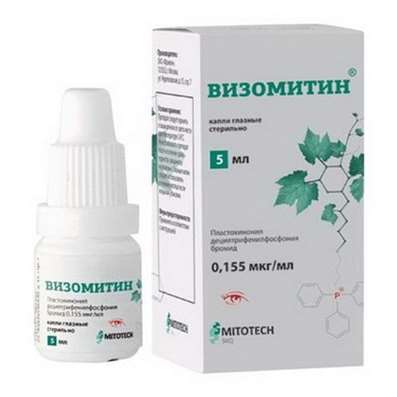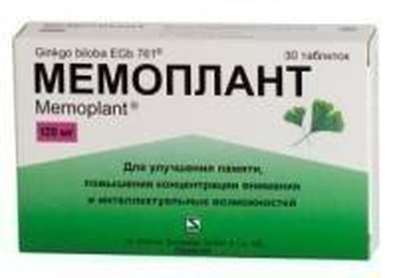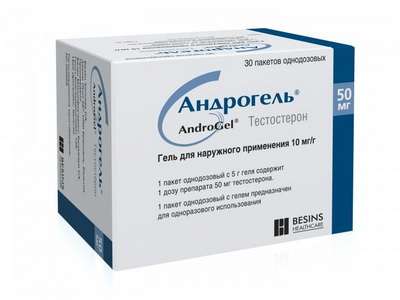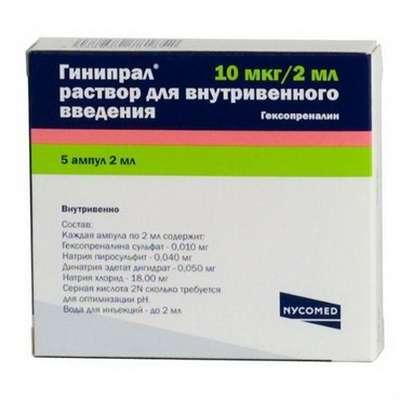Instruction for use: Carbidopa
I want this, give me price
Dosage form: substance-powder
Active substance: Carbidopa*
Dosage form
Tablets
Composition
Active substances:
250 mg of levodopa
25 mg carbidopa (27 mg as monohydrate)
Excipients:
Povidone,
Microcrystalline cellulose,
Carboxymethyl starch of sodium,
Silicon dioxide colloidal,
Magnesium stearate,
Talcum purified,
The dye is a brilliant blue E133,
Dye sunset sunset yellow E110,
Disodium edet,
Glycerol.
Description of dosage form
Tablets are oval in shape, biconvex, light-blue, with lighter or darker patches, with a risk on one side and a manufacturer's logo on the other side.
Pharmacological group
The antiparkinsonian agent (dopamine precursor + decarboxylase peripheral inhibitor)
Pharmacodynamics
The structure of levodopa is an amino acid formed from L-tyrosine. Dopamine is formed directly from levodopa with the participation of the cytoplasmic enzyme - decarboxylase of aromatic L-amino acids. The end result of dopamine is the inhibition of neuronal activity in the striatum of the brain. Levodopa is rapidly decarboxylated in peripheral tissues under the influence of aromatic amino acids dependent on pyridoxine decarboxylase, turning into dopamine, which, however, does not penetrate the blood-brain barrier. Carbidopa inhibits the decarboxylation process of levodopa in the foreground tissues, while not penetrating the blood-brain barrier and does not affect the conversion of levodopa into dopamine in the central nervous system. Thus, the combination of carbidopa and levodopa increases the amount of levodopa that enters the brain. When combined ingestion of carbidopa doubles the bioavailability of levodopa. The introduction of carbidopa never leads to the complete inhibition of dofadecarboxylase.
Pharmacokinetics
A. / Levodopa
Suction:
Levodopa is absorbed by active transport from the gastrointestinal tract, its passage through the blood-brain barrier is also carried out through active mechanisms. The barrier to absorption of levodopa is the presence of dopadecarboxylase in the intestinal wall. From the stomach, levodopa is absorbed in a limited amount. The rate of gastric emptying plays a key role in the absorption of the drug. Factors that slow gastric emptying (food, m-cholin-blocking agents) delay the passage of the drug into the duodenum and slow its absorption. The maximum concentration of the drug in the blood is noted 1-2 hours after the administration.
Distribution:
The volume of distribution of levodopa is 0.9-1.6 l / kg. If the activity of dofadecarboxylase is maintained, the total clearance of levodopa in the blood plasma is 0.5 l / kg / h. Levodopa penetrates the blood-brain barrier by facilitated diffusion. The endothelium of the capillaries of the brain also contains dopadecarboxylase as the second potential barrier to the passage of levodopa into the brain, however, in these capillaries an insignificant part of the administered dose of levodopa is decarboxylated.
Metabolism:
Approximately 70-75% of the administered levodopa is metabolized in the intestinal wall ("first pass" effect). Liver in the metabolism of the first passage of participation almost does not take. With an increase in the dose of levodopa, the amount of the drug that undergoes decarboxylation in the intestine decreases. Levodopa does not bind to plasma proteins. Decarboxylation of levodopa with dopadecarboxylase is the main way to form dopamine from levodopa. A large amount of this enzyme is found in the intestines, liver and kidneys. Methoxylation of levodopa under the influence of catechol-O-methyltransferase with the formation of 3-O-methyldopa is the second way of metabolizing levodopa. With long-term treatment, this metabolite can accumulate. Transamination is an additional way of metabolizing levodopa. The final product of this route is vinylpyruvate, vinyl acetate and 2,4,5-trihydroxyphenylacetic acid. All metabolic pathways, with the exception of transamination, are irreversible.
Allocation:
In combination with carbidopa, the half-life of levodopa increases to 3 hours. Up to 69% of levodopa can be found in the urine of a person in the form of dopamine and its metabolites of vanillinmundalic acid, noradrenaline, homovanilic acid, dihydrophenylacetic acid.
B. / Carbidopa
At recommended doses, carbidopa does not penetrate the blood-brain barrier. The maximum concentration in the blood plasma is achieved in 2-4 hours. Approximately 50% of carbidopa is excreted in urine and feces. 35% of carbidopa with excretory buds, is excreted unchanged.
Indications
Parkinson's disease and parkinsonian syndrome of known etiology (due to encephalitis, cerebrovascular disorders, intoxication with toxic substances, including carbon monoxide or manganese).
Contraindications
Hypersensitivity to the drug
Angle-closure form of glaucoma
Severe psychosis or neurosis
Pregnancy and lactation
Melanoma or suspicion of it
Skin diseases of unknown etiology
Huntington's disease
Essential tremor
Simultaneous reception of non-selective MAO inhibitors, an interval of less than 2 weeks after the end of MAO inhibitors
It should not be used to treat secondary parkinsonism caused by the use of antipsychotics (neuroleptics). It is not recommended to appoint patients under 18 years.
Carefully
The drug is taken with caution in patients with erosive and ulcerative lesions of gastric and / or duodenal ulcer, epileptic seizures in history, severe diseases of the cardiovascular system (including myocardial infarction with cardiac arrhythmias in the history of cardiac failure), diseases of the endocrine system ( including diabetes mellitus), severe lung diseases (including asthma), mental disorders, as well as severe liver and kidney function.
Dosing and Administration
Inside, with a small amount of food or after a meal, washing down with water and not chewing. Since there is competition between aromatic amino acids and levodopa during absorption, during the use of the drug, the consumption of a large number of proteins should be avoided.
The average daily dose of carbidopa, necessary to suppress the peripheral conversion of levodopa, is 70-100 mg. Exceeding 200 mg of carbidopa does not entail a further increase in the therapeutic effect. The daily dose of levodopa should not exceed 2000 mg.
The initial dose is ½ tablet 2 times a day, if necessary, you can increase ½ tablets per day. As a rule, at the beginning of replacement therapy, the daily dose should not exceed 3 tablets per day (1 tablet 3 times a day). Use in this dosage is recommended at the beginning of treatment of severe cases of parkinsonism. The daily dose of the drug as an exception can be increased with monotherapy, but should not exceed 8 tablets (1 tablet 8 times a day). Use in quantities of more than 6 tablets per day should be done with great care.
Side effects
Nervous system:
dyskinesia, including choreoathetosis, dystonia, prolonged use "on-off" syndrome, neuroleptic malignant syndrome, dizziness, ataxia, nausea, dystonic involuntary movements, seizures, anorexia, sedation, drowsiness, confusion, nightmares, tension, Increased excitability, anxiety, insomnia; Changes in mental status, including paranoid effects and transient psychoses; hallucinations, depression with the development of suicidal ideation or without, hypomania, increased libido, euphoria, dementia.
The basis for the decision to reduce the dose of the drug can serve as early symptoms, such as muscle twitches and blepharospasm.
The development of seizures has been reported, but no direct connection with the carbidopa / levadopa preparation has been established
Gastrointestinal tract:
anorexia, nausea, vomiting, constipation, epigastric pain, dysphagia, dark saliva, ulcerogenic effect in predisposed patients; Rarely gastrointestinal bleeding.
The cardiovascular system:
Orthostatic hypotension, collapse, arrhythmias, tachycardia, arterial hypertension, phlebitis.
Hematopoiesis system:
Rarely - leukopenia, anemia (including hemolytic), thrombocytopenia, agranulocytosis.
Allergic reactions: angioedema, urticaria, skin rash, skin itching, Shenlen-Henoch disease.
Changes in laboratory parameters: change in the level alaninamino- transferase, aspartate aminotransferase, alkaline phosphatase, lactate dehydrogenase, urea nitrogen, bilirubin, iodine bound to protein, hyperuricemia, giperkreatinemiya, positive direct Coombs.
Other:
Syncope, pain in the chest, mydriasis, diplopia, dyspnoea, darkening of secretion of sweat glands, darkening of urine, increase or decrease in body weight.
Side effects, as a rule, depend on the dose taken, as well as on the individual sensitivity of the patient. Side effects can be eliminated by a temporary dose reduction without interruption in treatment. If the side effects do not regress, then the treatment is stopped gradually.
Other side effects that occurred with the use of LEVODOPE, which should be considered in the case of carbidopa / levodopa:
Gastrointestinal tract:
Dyspepsia, dry mouth, bitterness in the mouth, sialorrhea, dysphagia, bruxism, bouts of hiccoughs, pain and discomfort in the abdomen, constipation, flatulence, burning sensation of the tongue.
Metabolism:
Decrease or increase in body weight, swelling.
HC HC:
Weakness, fainting, fatigue, headache, asthenia, decreased mental activity, disorientation, ataxia, numbness, increased tremor of hands, muscle cramps, trismus, activation of latent Bernard-Horner syndrome, insomnia, anxiety, euphoria, psychomotor agitation, unsteadiness of gait.
Sense organs:
Diplopia, blurred vision, dilated pupils, oculogic crises.
Genitourinary system:
Urinary retention, urinary incontinence, priapism.
Other side effects:
Hoarseness of voice, malaise, "hot flashes" of blood to the skin of the face, neck and chest, dyspnoea, malignant melanoma. There was reported a decrease in hemoglobin and hematocrit, hyperglycemia, leukocytosis, bacteriuria, erythrocyturia.
Change in laboratory indicators:
Drugs containing carbidopa - levodopa, can cause a false positive reaction to ketone bodies in the urine, if test strips are used to determine ketonuria. This reaction will not change after boiling urine samples. False negative results can be obtained using glucose oxidase method of glucosuria determination.
Overdose
Symptoms: first increase, and then lowering blood pressure, sinus tachycardia, heart rhythm disturbance, confusion, agitation, anorexia, insomnia, anxiety. Orthostatic hypotension may also develop. Symptoms of anorexia and insomnia may persist for several days.
Treatment: symptomatic. Gastric lavage, reception of activated charcoal, if necessary, symptomatic treatment in a hospital. There is no specific antidote. Pyridoxine does not remove the action of the drug. At present, there is no data on the use of dialysis. It is necessary to monitor heart activity in order to prevent the development of arrhythmias.
Interaction
Simultaneous appointment with hypotensive drugs requires special attention in connection with the danger of postural hypotension.
When combined with tricyclic antidepressants, arterial hypertension and dyskinesia may occur, as does the bioavailability of levodopa.
Combined use of phenothiazines, butyrophenones and carbidopa / levodopa reduces the effect of the latter.
Carbidopa / levodopa can not be administered together with nonselective monoamine oxidase inhibitors, as the hypertensive crisis may develop. Treatment with monoamine oxidase inhibitors should be discontinued at least 14 days before drug administration begins. An exception is selegiline (selective monoamine oxidase inhibitor -B) which can be used as an adjuvant in the treatment with levodopa.
Can enhance the effect of sympathomimetics, in this connection, it is recommended to reduce their dose. With simultaneous application of levodopa with (-adrenostimulants, means for inhalation anesthesia, an increased risk of heart rhythm disturbances is possible.
When using amantadine with levodopa, a mutually potentiating effect is noted.
Methyldopa and levodopa can potentiate the side effects of each other.
Pyridoxine is a cofactor of dofadecarboxylase, the enzyme responsible for the formation of dopamine. When he is prescribed to patients receiving levodopa (without inhibitors of dopadecarboxylase) there is an increase in peripheral metabolism of levodopa and a smaller amount of it penetrates the blood-brain barrier. Thus, pyridoxine reduces the therapeutic effect of levodopa unless additional inhibitors of peripheral dofadecarboxylase are prescribed.
With the additional appointment of inhibitors of dopadecarboxylase, the daily dose of levodopa can be reduced by 70-80% while maintaining the same clinical result.
Joint use with diazepam, phenytoin, clonidine, thioxanthene derivatives, papaverine, reserpine, M-holinoblokatorami - possible mitigation of antiparkinsonian action.
Special instructions
It should not be used in cases of secondary parkinsonism (Parkinson's syndrome) caused by the use of antipsychotics (neuroleptics).
Discontinue treatment should be gradual, as with a sudden discontinuation of the drug may develop a symptom complex that resembles a malignant neuroleptic syndrome (muscle rigidity, fever, increased serum levels of CK). It is necessary to control patients who suddenly needed to reduce the dose of the drug or interrupt its reception. Absorption of levodopa in elderly patients is higher than in young patients. These data confirm the information about a decrease in the activity of dofadecarboxylase in tissues with age, as well as with the long-term administration of levodopa.
With erosive and ulcerative lesions of the stomach and / or duodenum, epileptic seizures in the history, severe diseases of the cardiovascular system (including myocardial infarction with heart rhythm disorders in the anamnesis, heart failure), diseases of the endocrine system (including Diabetes mellitus), severe lung diseases (including bronchial asthma), mental disorders, as well as severe violations of the liver and kidneys should be taken with caution. In such cases, patients should be closely monitored.
With prolonged treatment, periodic monitoring of liver, kidney, hemopoiesis and cardiovascular system is necessary, as well as monitoring of the patient's mental status.
When performing surgical operations, if general anesthesia is required, Carbidopa / Levodopa is prescribed without lowering the dose until the patient can take drugs and liquid inside. When using halothane and cyclopropane, the drug is discontinued at least 8 hours before the operation. Treatment continues after the operation in the same dose.
Patients with glaucoma against the background of taking the drug should regularly monitor intraocular pressure.
Influence on driving of vehicles:
It is necessary to refrain from the management of transport, as well as activities requiring rapidity of psychomotor reactions.
Release form
Tablets 25 mg + 250 mg
For 10 tablets in a blister of PVC film and aluminum foil. 10 blisters together with instructions for use are placed in a cardboard box.
Storage conditions
In a dry, dark place at a temperature of no higher than 25 ° C.
Keep out of the reach of children.
Shelf life
5 years.
Do not use after the expiry date printed on the package.
Terms of leave from pharmacies
On prescription.

 Cart
Cart





